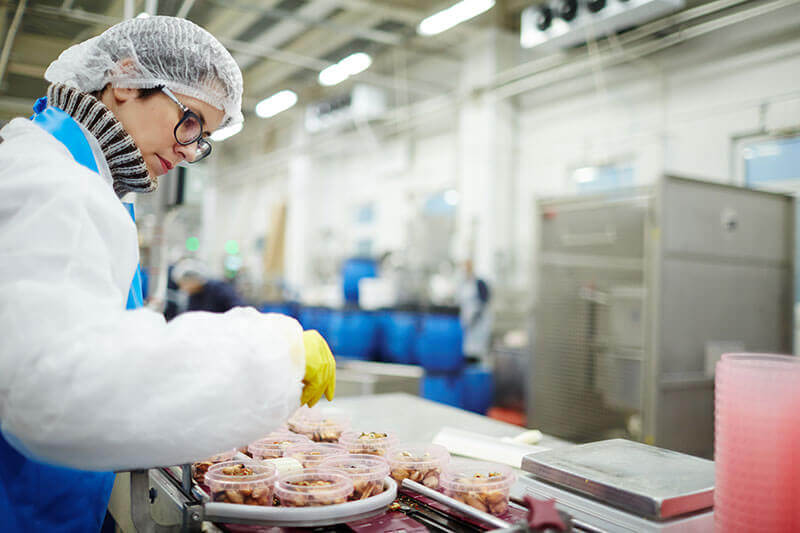Things Have Changed! Cleaning and Sanitation for the Food Production Facility

Lorne Piercey, CAEd.
When you consider a well-managed “cleaning & sanitation program,” it needs to be viewed not as a “necessary evil,” but as a vital part of production. An effective cleaning & sanitation program is directly related to the safety of your product and the ensured protection of your markets.
“All I want is for the plant to not smell too bad”
When I started my career with the industrial-sanitation industry almost 30 years ago, the above statement was part of one of the first conversations I had with a customer. This customer is a producer of seafood products. They were busy, and at the time considered the cleaning of the production operation as a necessary evil — that is to say, the cleaning process was something that had to be done to keep the smell down but it interfered with production, and production is what paid the bills.
At that time, at this location, all of what we consider today to be the “Bad Habits of Sanitation” were in full force; time constraints for the cleanup crew, lack of proper tools, lack of or incorrect chemical application equipment, too many different cleaning products and overuse of chemistry. On top of this, there was no defined sanitation program, no staff training and no staff supervision.
But, the place didn’t smell too bad!
How have things changed?
The seafood industry has changed considerably in the last 30 years. With the ever-expanding international markets and the growing needs for RTE (ready-to–eat) products, the challenges of providing a safe product on an industrial scale increase by the day.
In addition to the requirements of provincial and federal agencies such as the Nova Scotia Department of Fisheries and the CFIA (Canadian Food Inspection Agency), there is the need to meet the policies and requirements of third-party audit agencies involved. Under the GFSI umbrella are agencies such as BRC (British Retail Consortium, now known as BRCGS), Marks & Spencer, GFSI (Global Food Safety Initiative), SQF (Safe Quality Food), BAP (Best Aquaculture Practices) and numerous others. To add further complication and challenge, the regulation requirements presented by government and third-party agencies seem to be in a constant state of change.
A surprise for a number of seafood processors is the amount of time and importance that a third–party auditor will allocate to reviewing and assessing the sanitation program of a facility. For example, over a 3–4 day audit it is not unusual for the auditor to allocate 30–40% of the auditing time towards sanitation.
In addition, testing requirements have evolved well past the “all I want is for the plant to not smell too bad” measurement. Cleaning & sanitation results have to meet strict, pre–operation requirements through various testing protocols and methods. Visual inspections, ATP testing, bio-swabbing, biofilms detection and more recently allergen testing which requires evaluating cleaning results on the molecular level. This requires supporting and recording with documentation. Every day!
I see. So how does this affect my cleaning & sanitation requirements?
As the market and regulatory changes have evolved the requirements for cleaning & sanitation have had to change as well. In fact, the approach has had a 180-degree about-face. 30 years ago my main role was to visit my customers, determine what chemicals they needed and acquire a purchase order. Today 70–80% of my time is devoted to providing them with effective education support.
Okay, I think I have to make a change. Where do I look for help?
If you need to improve on your existing sanitation program, you need to have an honest conversation with your existing sanitation supplier. In most cases, any changes required can be corrected in short order. If you need to make a change in suppliers or need to develop a new sanitation program, you have to do your homework.
Look to a supplier that specializes in the development and support of sanitation programs for the industrial food sector. A professional supplier will start with an audit of your facility, and based upon their findings be able to present you with alternatives and solutions. A well-developed cleaning & sanitation program would cover but not be limited to:
- Cleaning & sanitation procedures
- Sanitation management systems software (such as the CEPS program)
- Optimization of costs
- Documentation
- Chemical handling & safety
- Use and maintenance of dispensing/ application equipment
- Correct, up-to-date multilingual workplace signage
- The right tools for the job
- A documented and mutually beneficial supply agreement with your sanitation supplier (a requirement for most third-party certifications)
- Effective and available sanitation training for your cleaning crew
- An effective, open and cooperative relationship with your sanitation supplier as a means of supply and support
Your main goal as a producer is to develop a sanitation program over which you have full ownership, one that effectively meets your needs and can be efficiently managed and maintained.
Conclusion
Sani Marc Food & Beverage is committed to providing the seafood industry with all necessary information and support relative to the cleaning and sanitation, technological improvements, industry training and the processes implemented in cleaning and sanitizing.

